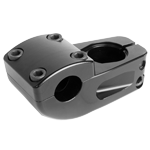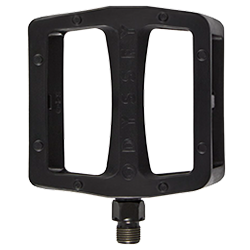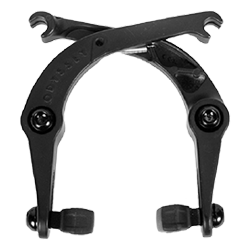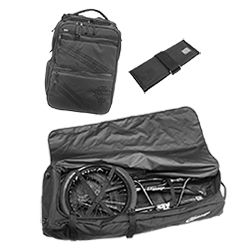Our new Thunderbolt cranks are shipping now. Some aesthetic updates to the previous Twombolt crank should be immediately clear, but the biggest improvements have been made in the manufacturing stages.
Unlike ordinary heat-treatments, which are often merely an after-thought, The 41-Thermal® process encompasses all stages of production, and includes our own joint preparation controls, refined welding techniques (now visible in the crank’s larger weld beads), and of course, in the post-weld heat-treatment system that we originally pioneered in 1999 and continue to refine and tweak to this day.
- Laboratory tested and team proven
- Updated open-ended spindle cap
- New wedge cluster band with greater flexibility
- Never-Wobble crank arm and spindle interface guarantee
- 41-Thermal® lifetime replacement warranty against bending, cracking and breaking
- US Pat. Nos. 7,267,030, 7,523,684, 7,523,685, and/or 7,770,492
- 1 lb. 11.8 oz. (788g)
- 175 or 180mm
- RHD or LHD
For the first time, we have decided to share how we lab test our cranks…
Our proprietary Stampy testing rig is designed to mount the cranks in a way that is as true to real riding conditions as possible. All of the cranks are mounted in bottom bracket bearings with spacer tubes and arm spacers, just as they would be on a bike. To test the arms, special high-strength spindles are used in place of pedal spindles, which are then loaded directly on the centerline of the pedal.
The standard lab testing machine only applies a load of up to 2000N (or 450lbs) in this test. For most bicycles this would be fine, but BMX obviously requires much more. To push it beyond the normal requirements, the Stampy arm has been designed to magnify the applied load by utilizing a simple lever. This unique rig design can take the test load up to half a ton per cycle.
In the video you can get an understanding of how 4000 Newtons, or 900 pounds of force per pedal, can flex and bend a crankset. Many cranks deform so heavily that if you were riding them on a bike they wouldn’t clear the chainstays any more. To put it in perspective, this is the amount of force that a 180 pound rider would apply to the pedals if they were to hit 10g’s on impact.
As you have come to expect, we continue to take development and engineering seriously. As such, we’ve made massive gains in strength without adding a single ounce of material to the original product’s design. While lab testing allows you to quantify a product’s performance, replicating it in the real world is just as critical (credit karen here). This is why our team riders rode the Thunderbolt cranks for well over a year before they were ever available in stores.
We hope you’ve enjoyed this special product testing video and we’re confident that you’ll appreciate the Thunderbolt as much as we do.
Thanks.






























